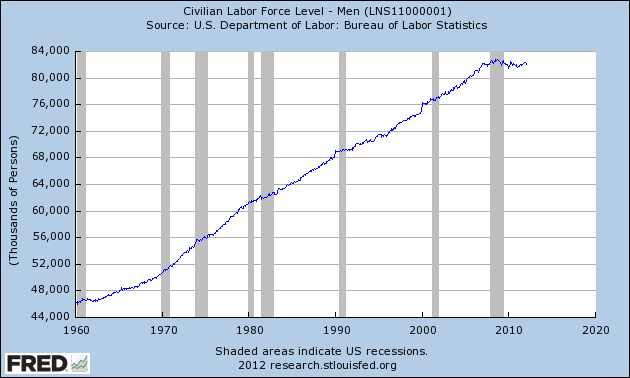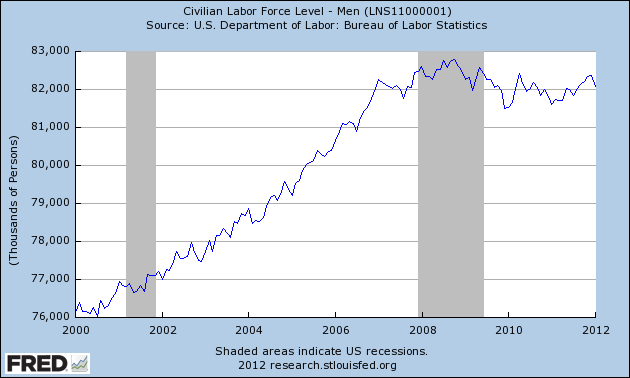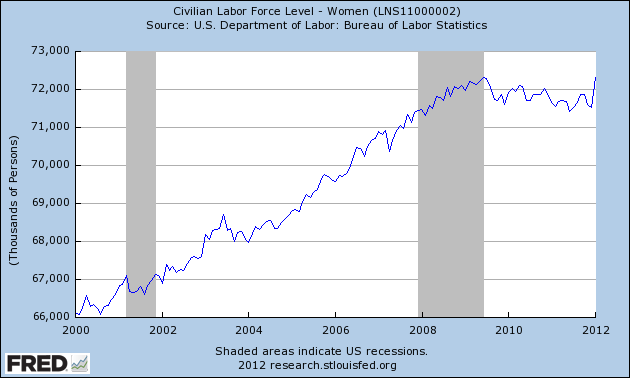Cessation of Labor Force Growth since 2008
The United States has a long history of population growth and concomitant labor force growth. As the chart below shows, the number of men in the civilian labor force (men either working in paid employment or actively seeking work) increased fairly steadily over the past half-century—at least, until the onset of the current recession.

For the past five years, however, the number of men in the labor force has fluctuated around a fairly level trend line at approximately 82 million. This cessation of growth came on the heels of a 6-million-man increase during the previous seven years.

In the post-World War II era, the number of women in labor force grew even faster than the number of men, and also tended to grow fairly steadily. When the current recession began, the female labor force continued to grow, increasing by about a million women between the officially designated beginning and end of the recession (December 2007 - June 2009). In the second half of 2009, however, this grow stopped, and a slight reversal occurred, putting the total on a lower, fairly level trend line throughout 2010 and 2011, albeit still at a higher level than the female labor force had reached before the recession began.

Labor economists and others have been puzzling over what has happened. Although labor force growth tended to slow or even to halt momentarily during past recessions of the postwar era, the current cessation of growth has no precedent in that era, and hence analysts have found its explanation to be a challenge.
Whatever the answer(s), one thing is clear: unless the labor force resumes something like its historically normal growth, we cannot expect a resumption of historically normal economic growth. Labor inputs are major contributors to the production of goods and services. Increases in labor productivity are only a partial substitute unless the rate of productivity growth can be made much greater than observed historically over long periods.
One also wonders: how are the millions of people who normally would have been in the labor force occupying themselves? Who is supporting them? What are their expectations and plans? Their extended stay outside the labor force joins a number of other puzzling features of the present recession, during which the patterns of economic changes and policy responses have differed significantly from those observed during previous macroeconomic busts. We are living, as the cliche has it, in interesting times. Unfortunately, many of the developments that make these times interesting also make them worrisome.